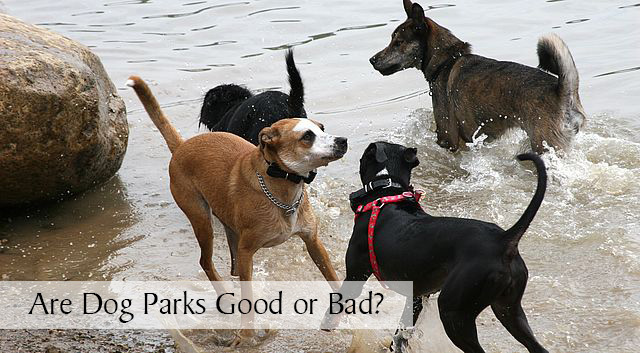 Are you thinking about visiting your local dog park? You’ve probably heard some dog owners rave about how wonderful dog parks are for exercising and socializing dogs and how they go on a regular basis and enjoy hanging out with their doggie and human friends. You’ve probably also heard other dog owners describe how these parks are full of diseases and dangerous dogs and that you should never take your dog to a dog park. So, which is it? Are dog parks good or bad? The truth is, not all dogs benefit from dog parks, but start by asking yourself the question below.
Are you thinking about visiting your local dog park? You’ve probably heard some dog owners rave about how wonderful dog parks are for exercising and socializing dogs and how they go on a regular basis and enjoy hanging out with their doggie and human friends. You’ve probably also heard other dog owners describe how these parks are full of diseases and dangerous dogs and that you should never take your dog to a dog park. So, which is it? Are dog parks good or bad? The truth is, not all dogs benefit from dog parks, but start by asking yourself the question below.
Why Do You Want to Visit a Dog Park?
If you have a confident, well-balanced dog that enjoys playing and interacting with different types of dogs and you’re looking for a way to exercise and further socialize your dog, a dog park might be a great place to hang out.If your dog doesn’t get along well with other dogs or is fearful and you think socializing with other dogs might be one way to help improve their behavior, the dog park is probably one of the worst places to hang out with your dog, at least for now. Dogs that have issues with aggression, fear, dominance, bullying or resource guarding should have their behaviors addressed and resolved in a slow, methodical and controlled process. A chaotic, crowded dog park could end up escalating any problem behaviors you’re trying to resolve.
Make sure you have a good level of control over your dog, both at home and while walking outside before visiting a dog park. If your dog is excitedly panting while dragging you to the gate of the park, either exercise your dog beforehand or consider working a little more on training and control first. Next, check out these five good and bad things about dog parks.
5 Good Things About Dog Parks
5 Bad Things About Dog Parks
The Verdict
Although I’ve had some good times with Haley at dog parks, I’ve also had some negative experiences and I find that the lack of control I have at the parks is what bothers me. Even if I have good control over my dog, I have virtually no control over the other dog owners and their dogs (and children) that may arrive at the park. Maybe if I went to the same dog park on a regular schedule with the same group of dogs (or joined a private dog park) it would be a more positive experience, but I like to do a variety of activities with Haley and I’m not one to stick to that kind of schedule.Don’t get me wrong, I’ve met a lot of really nice people and their pups at dog parks. I just feel that it’s my job to protect my dog and sometimes it’s a challenge to do that at dog parks. I also find that many dog owners are confused about whether to intervene when playing gets more intense or whether to just let the dogs “work it out”. So, my next post will include some general tips for visiting dog parks, advice about when to intervene and what to do if your dog gets into a fight.
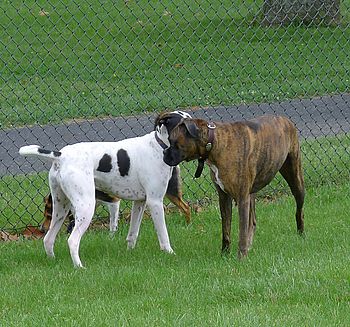 Don’t feel bad if your dog doesn’t enjoy visiting dog parks or if you’ve had a few bad experiences there. Not all dogs like the parks or even enjoy interacting with other dogs, for that matter. It doesn’t mean there’s anything wrong with your dog or you’re failing as a dog owner. Although Haley has come a long way in overcoming her fear issues and has gained a lot of confidence, she still gets a little overwhelmed in crowded dog parks. She would rather have a doggie play date or a get-together with friends or family members and their dogs in a more relaxed setting. But that’s just my verdict.
Don’t feel bad if your dog doesn’t enjoy visiting dog parks or if you’ve had a few bad experiences there. Not all dogs like the parks or even enjoy interacting with other dogs, for that matter. It doesn’t mean there’s anything wrong with your dog or you’re failing as a dog owner. Although Haley has come a long way in overcoming her fear issues and has gained a lot of confidence, she still gets a little overwhelmed in crowded dog parks. She would rather have a doggie play date or a get-together with friends or family members and their dogs in a more relaxed setting. But that’s just my verdict.
What’s your verdict? Do you think dog parks are good or bad for your dog?

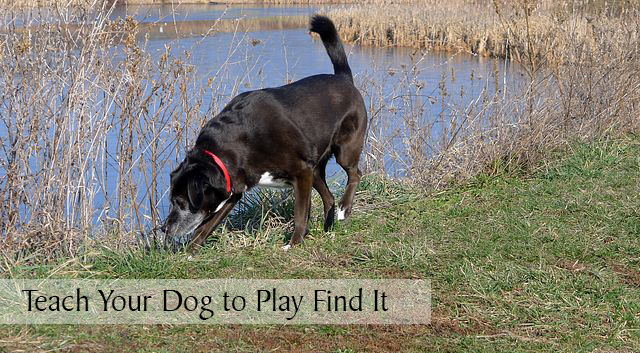 If you’re looking for a fun and easy way to entertain your dog on a cold winter afternoon, why not teach your dog to play Find It? Dogs have an amazing sense of smell and they love to use their noses to hunt and track things, especially yummy things! We humans use sight as our primary sense, but dogs primarily rely on their sense of smell to explore the world around them, which is why this is a very exciting game for dogs. By simply hiding a few treats around a room, your dog will learn to track the treats using his spectacular sense of smell and he’ll work off some of that excess energy in the process. Here’s how it works!
If you’re looking for a fun and easy way to entertain your dog on a cold winter afternoon, why not teach your dog to play Find It? Dogs have an amazing sense of smell and they love to use their noses to hunt and track things, especially yummy things! We humans use sight as our primary sense, but dogs primarily rely on their sense of smell to explore the world around them, which is why this is a very exciting game for dogs. By simply hiding a few treats around a room, your dog will learn to track the treats using his spectacular sense of smell and he’ll work off some of that excess energy in the process. Here’s how it works!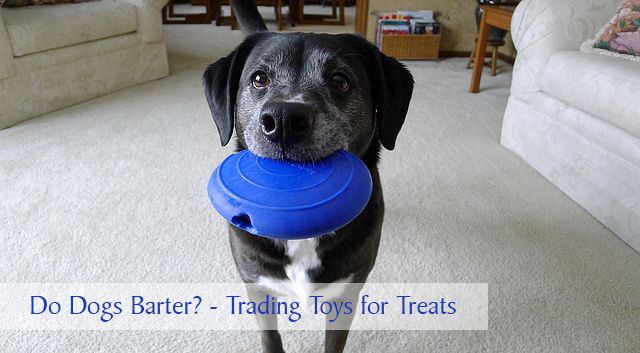 Something odd happened not too long ago that made me feel pretty unobservant as a dog owner and left me intrigued about my dog’s behavior. The question “Do dogs barter?” had never crossed my mind until…
Something odd happened not too long ago that made me feel pretty unobservant as a dog owner and left me intrigued about my dog’s behavior. The question “Do dogs barter?” had never crossed my mind until…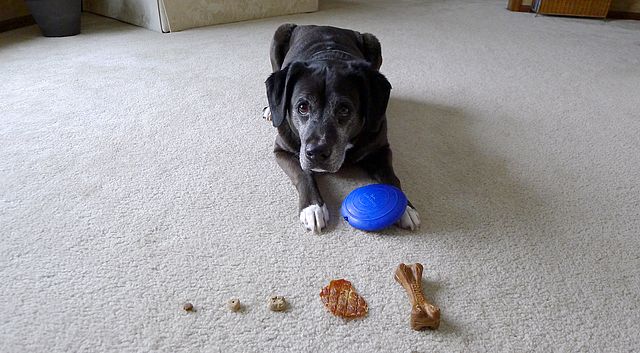
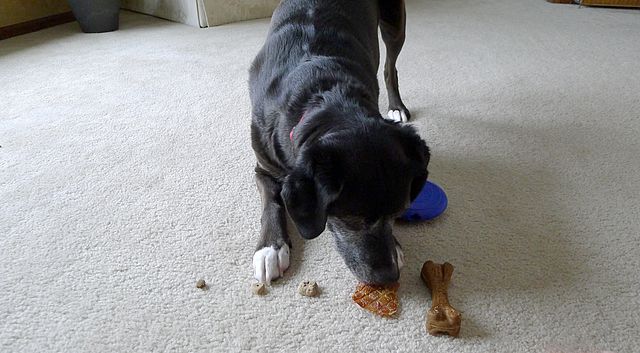 Haley makes out like a bandit with her trades because she always gets her toy back after a short period of time. Perhaps this should be a toy lease program instead.
Haley makes out like a bandit with her trades because she always gets her toy back after a short period of time. Perhaps this should be a toy lease program instead.
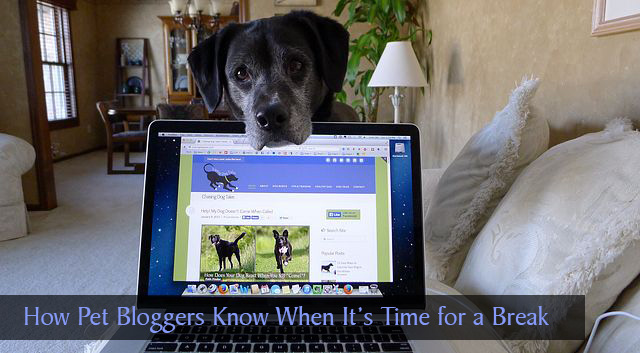

 I’m sure we’ve all experienced at one time or another a dog that doesn’t listen. When your dog doesn’t come when called, it can be frustrating, embarrassing and in some cases, downright dangerous. Even the best trained dog can occasionally get distracted by an unusually interesting scent or an intense game of chase with a cat or squirrel, but we want our dogs to reliably come when called.
I’m sure we’ve all experienced at one time or another a dog that doesn’t listen. When your dog doesn’t come when called, it can be frustrating, embarrassing and in some cases, downright dangerous. Even the best trained dog can occasionally get distracted by an unusually interesting scent or an intense game of chase with a cat or squirrel, but we want our dogs to reliably come when called.